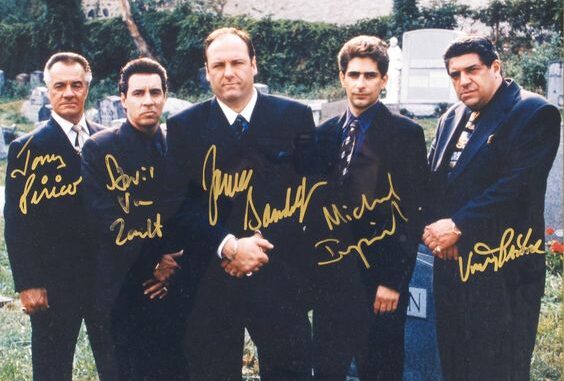
When you think of The Sopranos, the first images that come to mind are likely those of Tony Soprano, a mob boss balancing his criminal life with family drama. But did you know that the show started as a comedy centered around a mother? That’s right! The evolution of The Sopranos from a light-hearted concept to a groundbreaking drama is as fascinating as the show itself. Let’s dive into this incredible journey and explore how David Chase transformed his initial idea into the iconic series we know and love.
The genesis of The Sopranos dates back to the early 1990s when David Chase was brainstorming ideas for a new television show. Initially, the concept revolved around a woman—a mother—struggling to manage her family life. Chase envisioned a comedy that would explore the everyday absurdities of motherhood, with a particular focus on the chaotic dynamics within an Italian-American family.
A Mother’s World
Chase drew inspiration from his own experiences and those of the women in his life. He wanted to capture the humor and heartache that mothers often face. The idea of a mother at the center of the story seemed relatable, with comedic elements highlighting the trials and tribulations of raising children while juggling the expectations of family and society.
However, as Chase developed the concept, he realized that it needed more depth. The family dynamic was interesting, but it lacked the edge he was seeking. This realization led him to pivot the focus from a comedic mother to a more complex protagonist—Tony Soprano.
The Shift to Mob Life
Chase began to weave in elements of organized crime, drawing inspiration from his love of gangster films and stories. This shift marked a pivotal moment in the development of the show. By combining the relatable struggles of family life with the gritty reality of mob existence, Chase was able to create a narrative that would captivate audiences in a way that pure comedy could not.
As he delved deeper into Tony’s character, Chase began to understand that the complexities of a mob boss’s life provided rich material for storytelling. The juxtaposition of Tony’s violent profession against his desire to be a good husband and father would create a compelling narrative arc that could explore themes of morality, loyalty, and the American Dream.
The Birth of Tony Soprano: A New Kind of Anti-Hero
With the new direction in place, the character of Tony Soprano began to take shape. Chase’s decision to center the series around a mob boss was groundbreaking, especially given the character’s vulnerabilities. Tony wasn’t just a criminal; he was a man struggling with anxiety, depression, and the pressures of modern life.
Finding the right actor to portray Tony was crucial. Enter James Gandolfini. Chase knew from the moment he saw Gandolfini’s audition that he had found his Tony. Gandolfini brought a unique combination of strength and vulnerability to the role, which was essential for capturing the essence of Tony Soprano.
In early drafts of the script, the focus remained primarily on the comedic elements. However, as Chase continued to develop the story, he infused it with psychological depth, introducing therapy sessions that would become a hallmark of the series. These sessions provided insight into Tony’s inner conflicts, revealing the emotional struggles that lay beneath his tough exterior.
Chase’s choice to explore mental health issues within the context of a mobster’s life was revolutionary. It opened up conversations about masculinity, vulnerability, and the often-overlooked complexities of mob life. Instead of simply glorifying the gangster lifestyle, The Sopranos presented a more nuanced portrait, showing that even the toughest characters are human, with fears and insecurities.
The Creative Process: Developing the Series
As Chase began to solidify the concept, the development of The Sopranos moved into high gear. He pitched the series to HBO, a network known for pushing boundaries and embracing unconventional storytelling. The pitch was a success, and production began.
Episode Structure and Tone
One of the remarkable aspects of The Sopranos is its blend of genres. Chase skillfully combined elements of drama, dark comedy, and even tragedy. The show’s tone is often described as a mix of humor and pathos, allowing audiences to laugh while grappling with deeper emotional themes.
The episode structure also played a critical role in the show’s success. Each episode contained a mini-narrative arc, often leading to dramatic cliffhangers that kept viewers engaged. The balance of character development and plot progression ensured that audiences remained invested in Tony’s journey and the lives of those around him.
The Role of Family Dynamics
Family dynamics remained at the forefront of The Sopranos, even as the show evolved from its comedic roots. Chase expertly crafted a rich tapestry of relationships, showcasing the complexities of family loyalty, betrayal, and love. The interactions between Tony, Carmela, and their children added layers of depth to the story, making it more relatable to viewers.
The use of family as a narrative device allowed Chase to explore themes of power and vulnerability within the context of organized crime. It’s not just about the mob life; it’s about how that life affects the family unit and the individual members within it. This focus on familial relationships elevated The Sopranos beyond a simple crime drama, making it a poignant exploration of the human experience.
